|
Books by
Maria Reiche
“Markings: Aerial Views of Sacred Landscapes
by
Maria Reiche
Charles Gallenkamp
Keith Critchlow
Lucy Lippard
(Contributors)
Marilyn Bridges
(Photographer)
Haven O’More
(Preface)
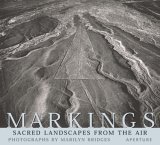
EU English Edition
“Mystery on the desert;: A study of the ancient figures and strange delineated surfaces seen from the air near Nazca, Peru”
by
Maria Reiche
Unknown Binding
1949 Edition
“Geheimnis Der Wuste/
Mystery on the desert/
Secreto De La Pampa”
German/English/Spanish
by
Maria Reiche
Hardcover
1968 Edition
“Peruanische Erdzeichen/Peruvian Ground Drawings
German & English
by
Maria Reiche
(Author)
Malcolm G. Leybourne
(Translator)
Dr. Hermann Kern
(Translator)
Hermann Kern
(Foreword)
1974 1st Edition
“Geheimnis Der Wuste/
Mystery on the desert/
Secreto De La Pampa –
Preliminaries for a Scientific Interpretation of the Pre-Histori c Ground-Drawings of Nazca, Peru and Introduction to Their Study“
German/English/Spanish
by
Maria Reiche
Hardcover
1989 7th Edition
Signed by author
Books about the Nazca
lines & geoglyphs
“Maria And The Stars Of Nazca / Maria Y Las Estrellas De Nazca”
Spanish & English
by
Anita Jepson-Gilbert
Rodger Osban
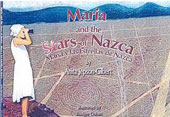
EU English Edition
“Ancient Nasca
Settlement & Society”
by
Helaine Silverman 
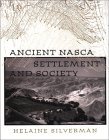
EU English Edition
“Nasca society arose on the south coast of Peru 2000 years ago and evolved over the course of the next 700 years. This text examines the range of sites occupied by the people responsible for some of the most exquisite art and ingenious hydraulic engineering of the pre-Columbian world.
|
|
Beside the proliferation of straight lines and trapezoid shapes with which ancient Nazcans marked the desert surface of the Pampa, there are to be found the most magnificent drawings of animals – some recognisable, and others apparently mythological. Maria Reiche’s work continued that of Dr. Paul Kosok with regards to looking for any astronomical considerations the builders of these figures might have incorporated into the designs. She tells the story of the discovery of these animal figures in the introduction to her 1977 book, “Mystery on the Desert”, and of how the existence of the scheme left by the ancient Nazcans began to unfold in the 1930s.
“When the largest drawings were first seen from airplanes, they were taken to be remnants of ancient irrigation. No special attention was given them until Dr. Paul Kosok came to Peru to study ancient irrigation on the coast. In order to take stock of the countless numbers and infinite variety of the mysterious drawings the author had to traverse the pampas (in Peru pampa means barren, flat land) on foot. The next figure to be discovered was the huge image of a spider, after this dozens of other figures of animals were encountered.
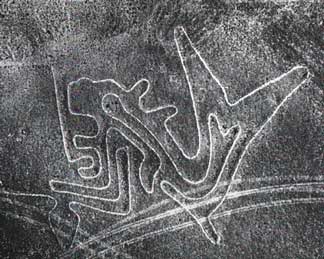
Copyright © 1949, Maria Reiche
A small figure, the line of it’s contours continuing inside, as is the case of the (other) fish (drawing). But for its ears, the figure could represent a whale. It could also be a legendary creature, a feline with the tail of a fish. This figure consists exclusively of curves, which were carefully and beautifully executed.
Where the line runs out of the picture at the upper left, it leads to an important star-like centre. Its direction, as seen from this centre, points to the setting sun on December 21st, which is summer solstice in the southern hemisphere.”
As can be seen, both Dr. Paul Kosok in the 1930s and 1940s, and Maria Reiche from the mid-1940s onwards until her death on 1998, found unmistakable evidence that the seemigly haphazard arrangment of lines and figures that greet the first-time observer was nothing of the sort. The setting and rising positions of the sun at its extreme points during the cycle of the solar year was carefully marked by straight lines in the directions towards those points on the horizon.
And, most importantly for our understanding of the possible reasons for the building of these enigmatic geoglyphs, recognition of the astronomical considerations that were incorporated into the siting and design of the Nazca drawings is something that should not be lightly dismissed by an academia founded on what is increasingly being seen as an ‘erroneous’ view of prehisory.
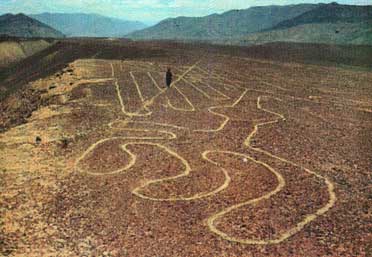
Copyright © 1949, Maria Reiche
“Occupying the foreground of the picture (above) is the foot of a huge bird, which was found beside many other drawings on a plateau above Palpa. Most figures are traversed by several straight lines, sometimes running parallel to part of the figure, or else, as is the case of the line shown here, coinciding with a short piece.
This arrangement seems to indicate, that figures were drawn specifically in places where several long, straight lines cross over each other. Figures and geometric patterns were preferably drawn at the very edge of the plateaux.”
While these drawings were obviously achievable in human terms, exactly how their construction was directed has puzzled everyone. The photograph above was taken from a tall step-ladder and shows the foot of one of several bird geoglyphs. It’s immense size become crystal clear when compared with the human figure in the background. Probably the geoglyph which most adequately shows the sheer size and complexity of the drawings on the Nazca Plain is that of the monkey, which is shown in full in the aerial photograph below.

Copyright © 1949, Maria Reiche
“The monkey and surroundings would be an appropriate subject for a special study, as it is a complete unit and the pursuit of each line to its origin does not, as at the border of the pampa, lead unendingly from one thing to another. This drawing consists of no more than two elements.
One is a wide line (or better geometric surface, being at the beginning twice as wide as at the end) with a stem which, almost a mile long, leads into the maze of lines at the edge of the pampa. The other is one single un-interrupted line, of which only a small piece is lost between the end of a zigzag line and a small winding path at the bottom of the long geometric surface.
The line starts from one side of the long surface and after describing the contours of the monkey, consisting only of curves, runs through two different zigzag-shapes and crosses sixteen times over the geometric surface at whose top it finally ends.”
This drawing of a monkey is so large it covers an area of many square miles. Many believe that these figures represent the constellations of the southern hemisphere as they were depicted by the ancient inhabitants of the pampa – the desert plain of eastern Peru. Certainly the ‘special study’ that Maria Reiche suggested in her 1977 book “Mystery on the Desert” is one that should be taken seriously by archæologists, especially now that she is no longer around to champion the cause for the preservation of this incredible scientific achievement by ancient Nazcans.
all quotes on these tribute pages are from
“Mystery on the Desert”
by Maria Reiche
|
|
“Pathways to the Gods: The Mystery of the Andes Lines”
by
Tony Morrison
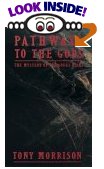
EU English Edition
“Nazca: Eighth Wonder of the World?”
by
Anthony F. Aveni
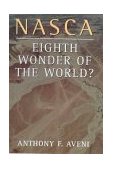
EU English Edition
“The Nasca
(Peoples of America)”
by
Helaine Silverman 
&
Donald A. Proulx 

EU English Edition
“Ancient Nasca culture of the south coast of Peru is famous for its magnificent polychrome ceramics, textiles, and other works of art, as well as the enigmatic ground markings on the desert plain at Nasca. In the past two decades much has become known about the people who produced these fascinating works. This scholarly yet accessible book provides a penetrating examination of this important civilization.”
Nazca News
more information
about the Nazca lines
& geoglyphs on
:
Landscape Geometry
Lines Over Mountains
Animals & Landscape
Figures On The Plain
The Human Scale
Birds On The Pampa
The Spider Geoglyph
& The Stars Of Orion
Spirals In The Desert
|